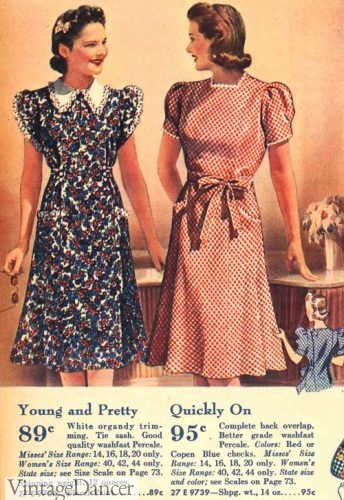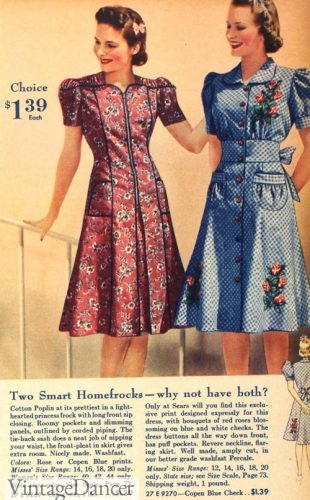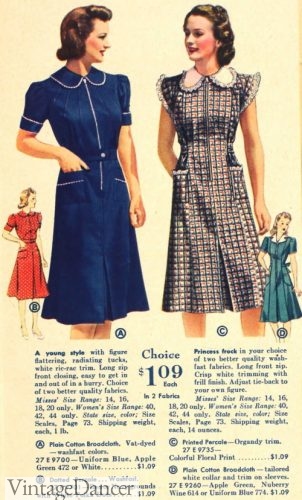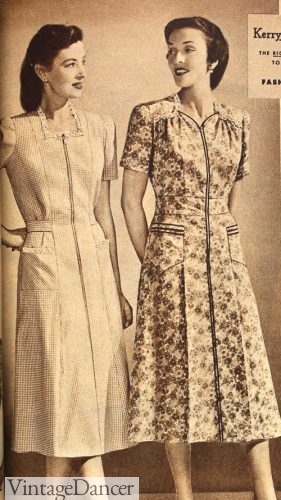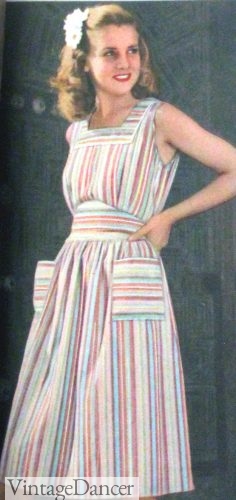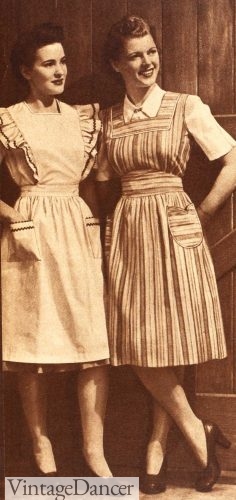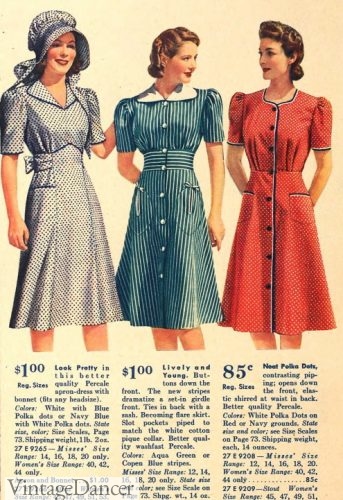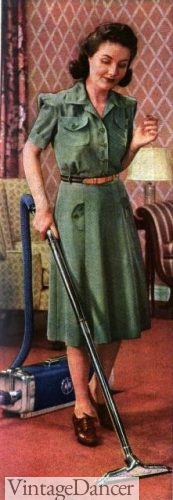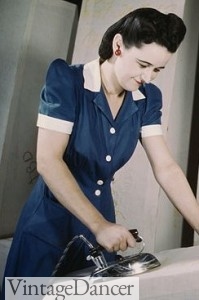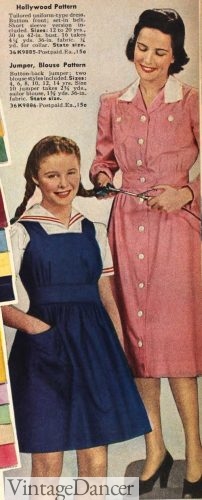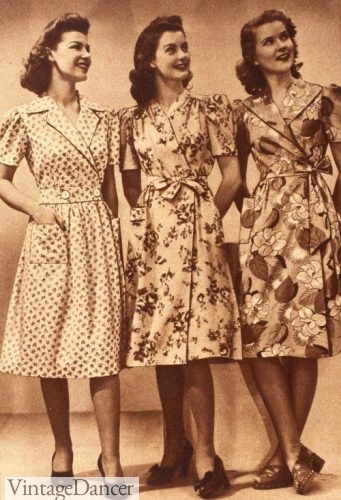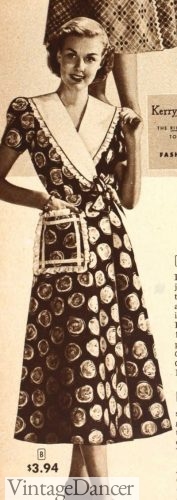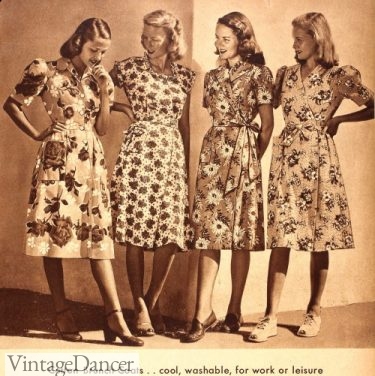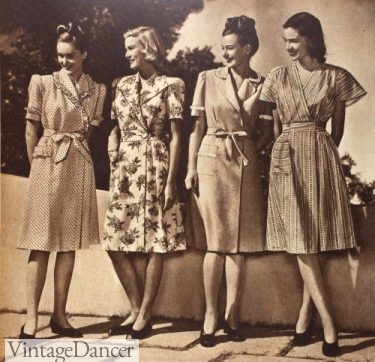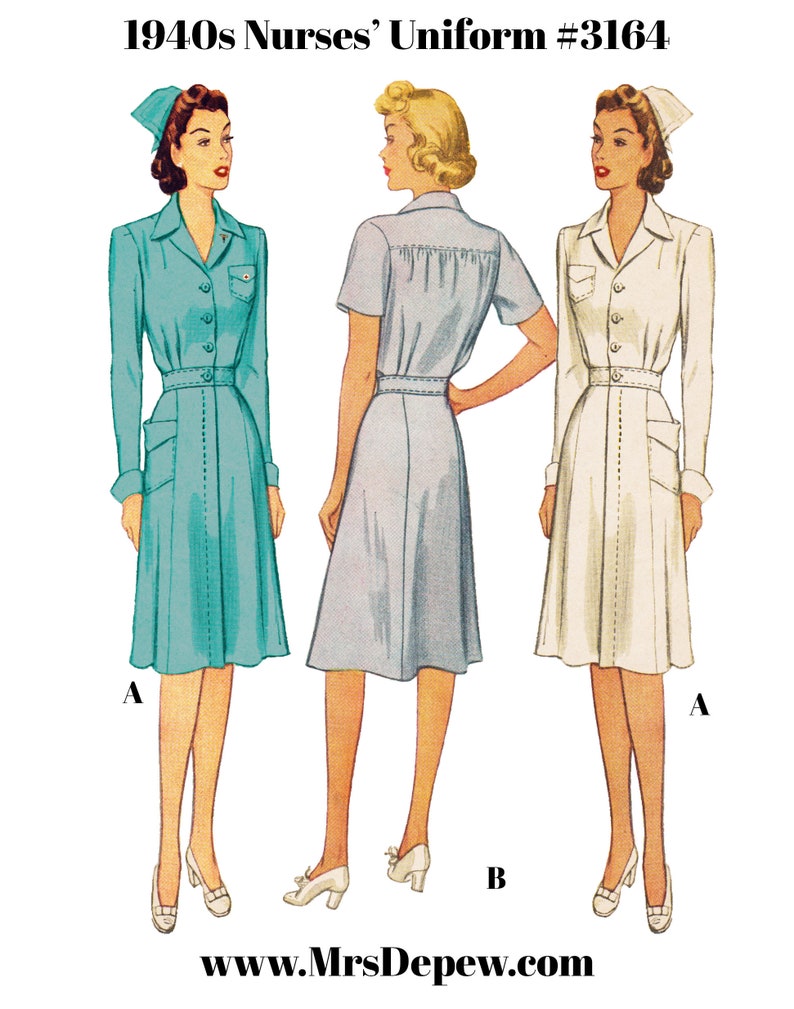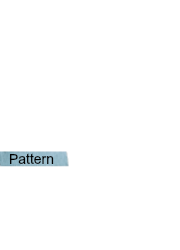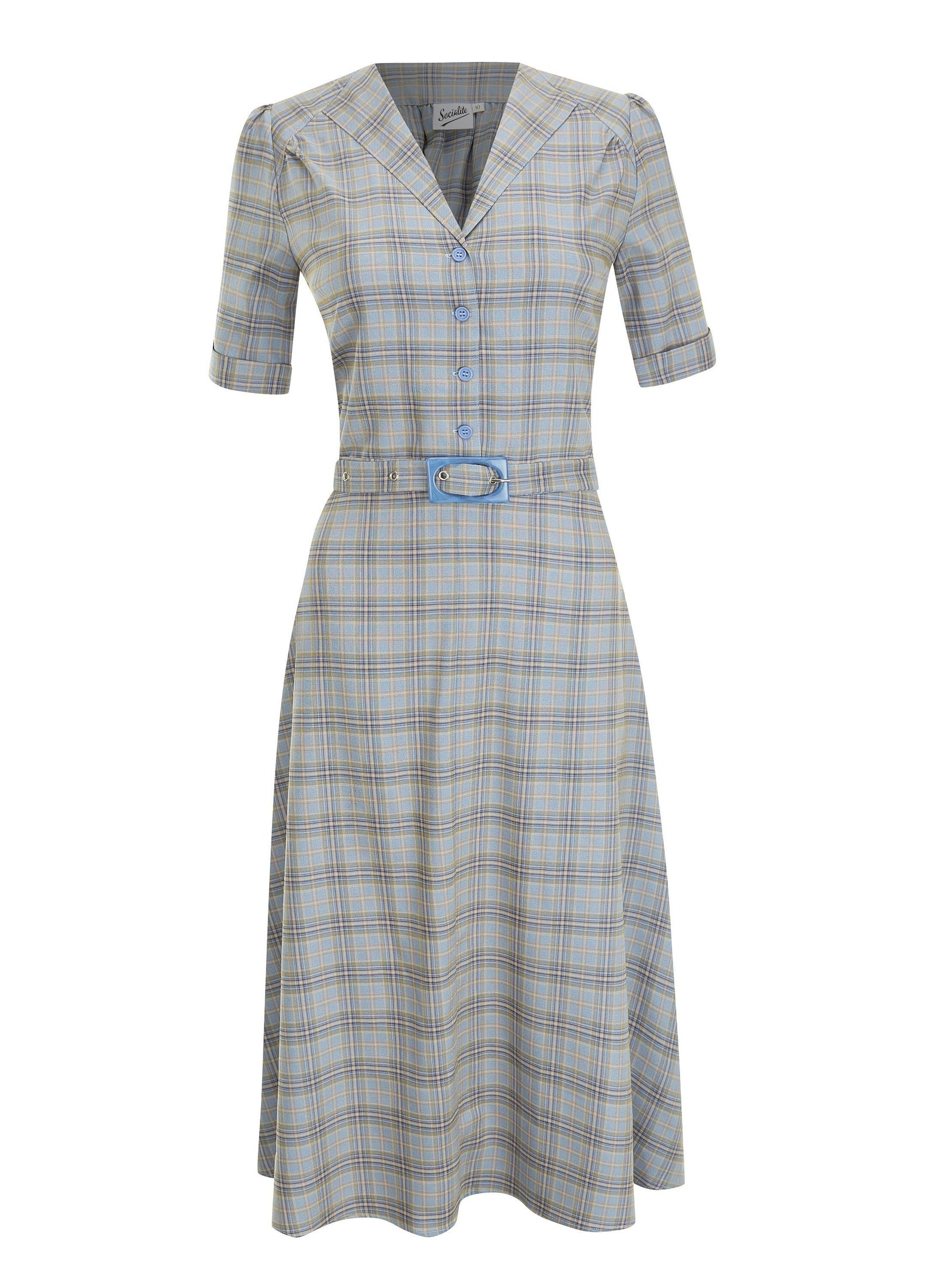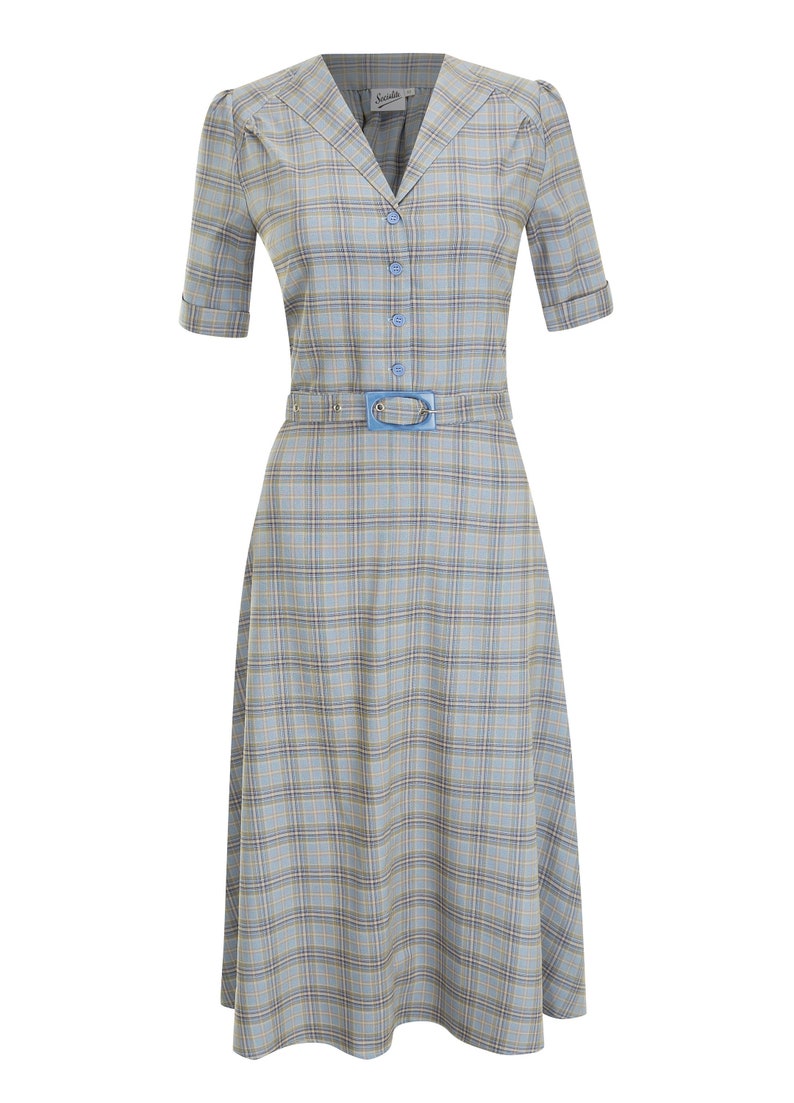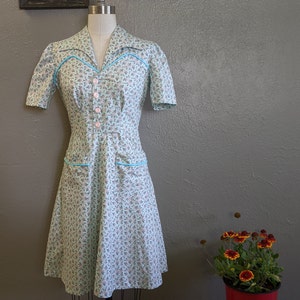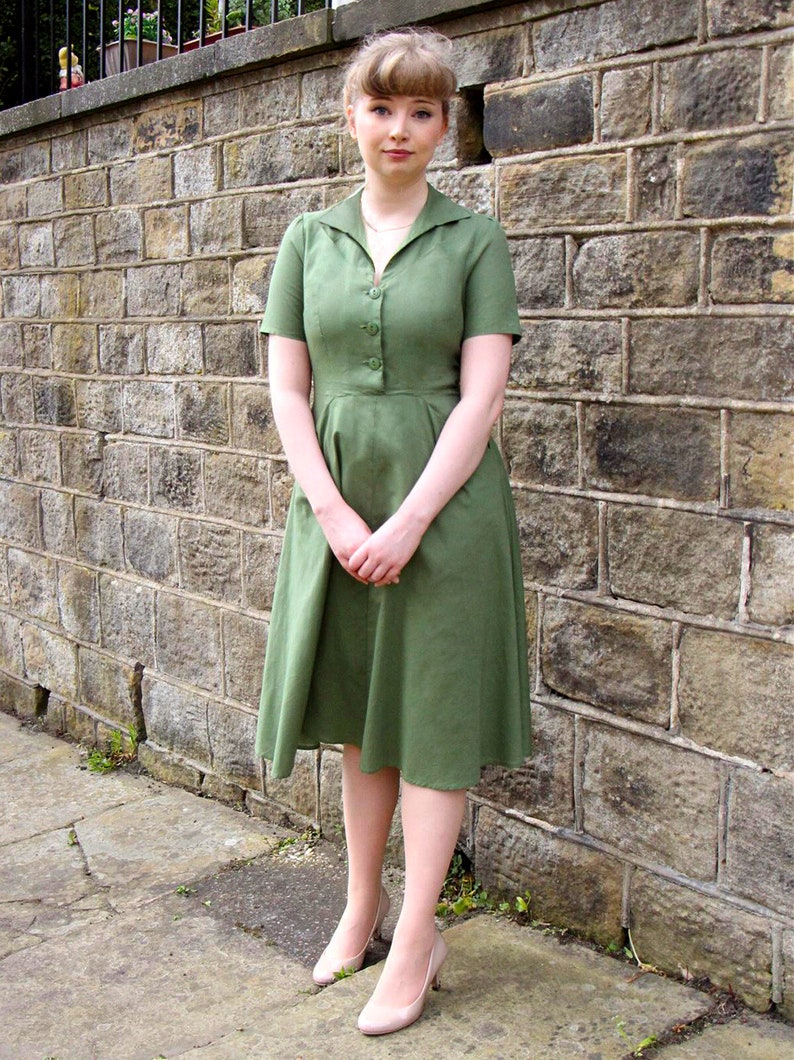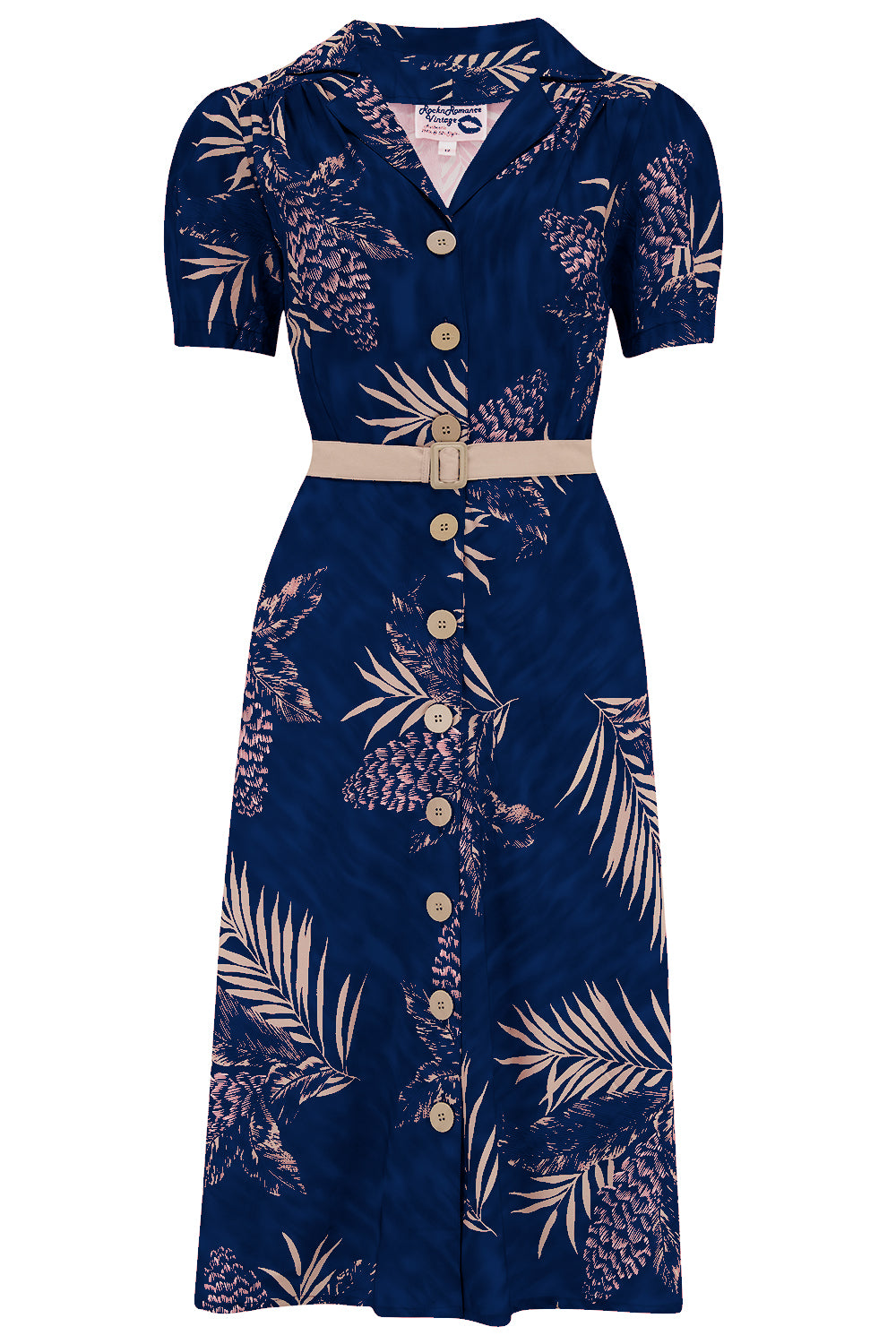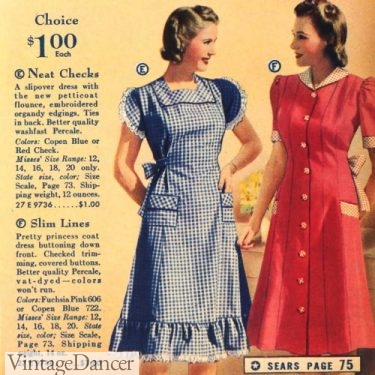
1940 house dresses
The late 1930s house dress styles continued into the 1940s with cute puff sleeves, ruffle trim and heart shaped pockets. Cute, is the best word to describe the war time house dress. Prints were cute, colors were cute, trim was cute. The child-like designs were inspired by the traditional Austrian pinafore fashions. Innocent and charming, the house dress distracted women from the looming hardships, loss and and burden war brought to them.
Because of war time restrictions and limited fabrics as well as clothing budgets, 1940s house dresses could be worn at any time of day and even out in public. Women usually avoided wearing an old or dirty house dresses outside of the home. A new house dress may have been worn to the store or other informal outing. Children and teen girls wore them all day too.
The lines were blurring between all styles of 40s dress but it was the house dress that inspired early 40s fashion the most.
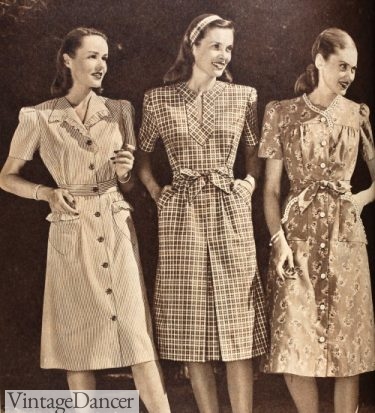
1946 “gay in the kitchen, smart enough for visitors” house dresses
1940s House Dress Styles
Apron Style
The 30s house frock with wrap back and tie belt was almost out of fashion in the 1940s. Instead there was the apron style house dress. It slipped on overhead and a had a tie back sash that tightened in a bow at the back. The sash could be worn looser for maximum mobility or tight for a hour-glass waistline.
Short puff sleeves, an a-line skirt, and uniquely shaped pockets add to the apron-like appearance. Most dresses had large rounded collars or pointed collars trimmed in ruffles, rick-rack or piping.
- 1940 apron style and frock style house dresses
- 1940 zipper front and apron-style house dresses
The slide fastener or zipper front house dress was another carry over from the 1930s that remained through 1942 but because metal was needed for the warfront they became unaffordable. After the war they returned again appearing on plain house dresses and work uniforms.
- 1940 zipper front house dresses
- 1948 zipper house dresses/work dresses
Pinafore House Dress
Similar to the apron style was the pinafore house dress. It looked like an apron with two patch pockets on the hip, a wide waistband and wide top straps. In summer is could be worn sleeveless while in spring or fall it was worn over a cotton blouses. Some models came with an attached blouse.
Vertical stripes or plain colors with ruffle straps were the most common patterns. In other colors and novelty patterns it was equally charming as a daytime summer dress. Teen girls loved them the most.
- 1944 candy stripe pinafore dress
- 1943 white or stripe pinafore house dresses
Shirtwaist Style
If there was one house dress style that defined the 1940s it was the shirtwaist dress. Worn as a houses dress, a uniform, a daytime dress and even some party dresses. The house dress buttoned up the full length of the front while daytime styles may have only buttoned the bodice.
Skirts were wide A-lines and collars were masculine inspired notch lapels or shirt dress style collars and the girly- round peter pan collar. Non-collared dresses used the very high sweetheart neckline or round neckline trimmed in piping or rick-rack.
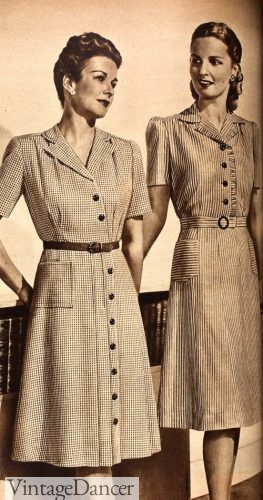
1946 classic gingham checks and stripe shirtwaist house dresses
House dress patterns were plentiful. The traditional candy stripe, polka dot and gingham prints remained classics. Small florals were as lovely as plain colors trimmed in white or contrasting piping, buttons and collars. Whatever color or print made a woman smile was her chosen house dress material.
- 1940 apron style and two shirtwaist house dresses
- 1941 a shirtwaist bodice dress could move from housewear to daywear
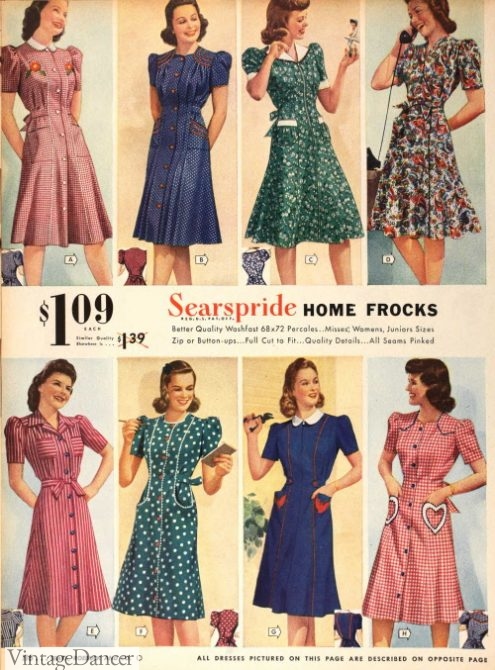
1941 the button down shirtwaist house dress was the most popular of all styles
Shirtwaist dresses in plain colors and white cuffs and collars had been a traditional uniform style for women working in service. In 1940, a navy shirtwaist dress was worn by Ginger Rogers’ character in the 1940 film of the same name. After that women began adding white cuffs and collars to their house dresses as a frugal way of sprucing up an old dress.
- 1941 Kitty Foyle Dress
- 1941 pink shirtwaist dress with white collar
The hype over the Kitty Foyle dress ended after the war but for women in service (maids, nurses, waitresses, nannies, factory workers) the style continued.
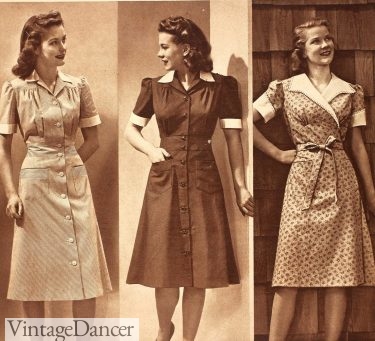
1943 house dress or uniforms? Both
Wrap Dress
The concept of the wrap dress as a house dress wasn’t a new one but in the 1940s it had a revival and became the second most popular style. A large shawl wrap over collar crossed the bodice and buttoned at the waist. A tie front belt bowed in front or back. Dresses had one pocket on the front right side.
They were touted as “easy on” and “easy to iron” since they folded out flat. They took on a new name, brunch coat. Like the floor length housecoat it could be wrapped over sleepwear like a robe and worn around the house to make breakfast. As a house dress it was pretty enough to serve “brunch” in when guests were over. And it was stylish enough to cross over into summer daywear.
The demand for brunch coats increased as he decade moved into the 1950s. Hemlines lengthen, prints because more “modern,” lapels touched the end of the shoulders.
- 1947 wrap house dress or brunch coat
- 1943 brunch coats
- 1949 mid length brunch coat
- 1944 brunch coats
- 1946 brunch coats
The full-length housecoat could be worn around the house but was not a work dress nor day dress. It fit into the sleepwear/robe classification.
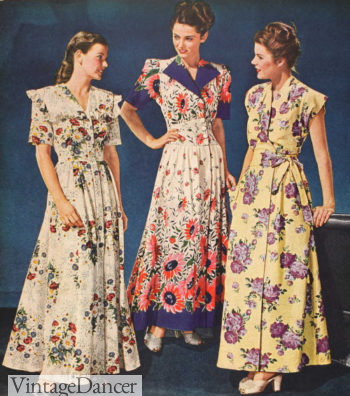
1946 floral housecoats- a cross between a dress and robe
Continue to 1950s house dress history.
Make or Buy 1940s House Dresses
Since most 40s reproduction brands focus on dressier dress styles finding a housedress can take some effort. Shirtwaist dresses are plentiful and make excellent house dresses if you find one in a cute print and cotton fabric. Look here for daywear and house dress options.
Sewing a 1940s house dress is usually the best option for accuracy and more fabric selection. You can choose a quilters cotton but I prefer to look for a softer cotton with a nice drape. Old bed sheets work very well too.
Find house dress sewing patterns here.
Some 40s daytime/house dresses for sale:
Debbie Sessions has been teaching fashion history and helping people dress for vintage themed events since 2009. She has turned a hobby into VintageDancer.com with hundreds of well researched articles and hand picked links to vintage inspired clothing online. She aims to make dressing accurately (or not) an affordable option for all. Oh, and she dances too.
